mytest
eBooks, Books, and more from Dr. ARUDOU, Debito (click on icon):
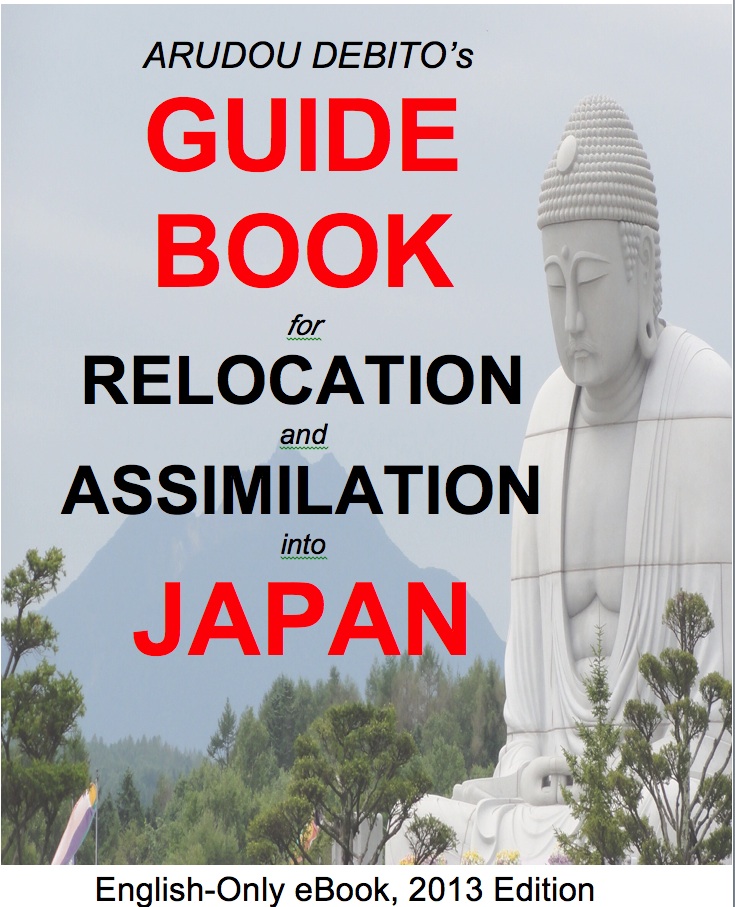
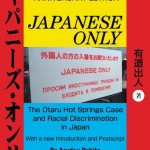
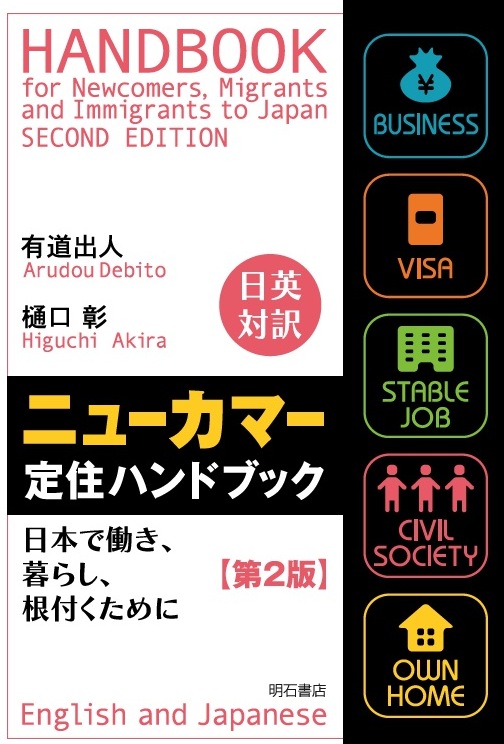
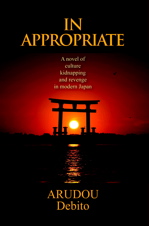

![]()

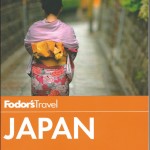
UPDATES ON TWITTER: arudoudebito
DEBITO.ORG PODCASTS on iTunes, subscribe free
“LIKE” US on Facebook at http://www.facebook.com/debitoorg
http://www.facebook.com/handbookimmigrants
https://www.facebook.com/JapaneseOnlyTheBook
https://www.facebook.com/BookInAppropriate
If you like what you read and discuss on Debito.org, please consider helping us stop hackers and defray maintenance costs with a little donation via my webhoster:

All donations go towards website costs only. Thanks for your support!
Hi Blog. I’ve been sitting on this article for about a year, and now it’s time to come out. After a year at the East-West Center in Honolulu as an Affiliate Scholar (where I wrote up my doctoral dissertation; it will be coming out as a book in November), I must say that I agree with its points. If anything, it’s worse now than when the article was first published, since the people in charge are essentially the same and the programs they foster have very little integration with the local community (the campus at large has very little idea, for example, what goes on in their unannounced Wednesday Evening Seminars; their brown-bag lunch talks, although more widely advertised, are generally designed to be uncontroversial US-policy trial balloons). I see the place as an Elephants’ Graveyard for many a former US ambassador or high-level US bureaucrat who would like to count down the clock in their career in Honolulu’s magnificent climate. So much potential there, wasted due to leaden bureaucratic mindsets and the lack of utilized fresh outlooks. You’ll get a better idea how and why by reading this article. Dr. ARUDOU, Debito
///////////////////////////////////////
IPR EXCLUSIVE
A ROPE BRIDGE IN A FIBER-OPTIC AGE: THE EAST-WEST CENTER IN HAWAII
The Indo-Pacific Review JULY 15, 2014
http://www.indopacificreview.com/rope-bridge/
The East-West Center in Hawaii is timid, insular, and lacking in fresh, dynamic thinking about a region that has outpaced the institution as a whole.
The East-West Center (EWC) in Hawaii is well-positioned geographically and conceptually to be a powerhouse of constructive, intellectual engagement with Indo-Pacific Asia. A 50-year legacy of providing academic and research fellowships to young students from Asia has developed a deep regional network of alumni now in senior government positions, multilateral organizations, and the private sector. Over the years, hundreds of experts in governance, policy, science, and history have resided in or served as visiting scholars at the institution. Its spacious facilities, some designed by a world-class architect, are immersed within a beautiful, serene campus setting. And yet this venerable soft-power institution has become flaccid.
Inside the Center, offices are being emptied and desks fill the main corridors. Most of the fourth floor in the EWC’s main building is now rented out as office space for the University of Hawaii in the continual effort to conserve funds. Lining the halls are glass display cases of carefully arranged EWC publications that appear to have been enshrined there for decades. Visitors to the Center must obtain a password and pay a fee to access the wireless Internet. Once a place of community life with a highly popular Friday pau hana on the grounds outside, these after work community get-togethers were shut down years ago because of liability concerns. The atmosphere is more akin to a museum under consolidation than a hub of dialogue and activity.
The EWC president, Dr. Charles Morrison, has been in place for 16 years. During this period he is widely credited with keeping the non-profit Center from being shuttered (this instinct for survival applies to his own job, as he was once dismissed, but then returned to his position as president). Most recently he helped the institution weather the very public resignation of EWC’s entire energy team led by Dr. Fesharaki, which revealed the “turmoil” inside the Center. However, simple survival should never be the measure of institutional success. With a purported deadline of 2018 to achieve self-sufficiency, transformative change is required for the EWC to evolve from prolonged survival thinking to a thriving institution renowned for being a vanguard of engagement on critical issues.
Founded in 1960 through the vision of the late Hawaii Senator Daniel Inouye, the EWC’s mission to promote “better relations and understanding among the people and nations of the United States, Asia, and the Pacific through cooperative study, research, and dialogue” is of paramount importance. While a 1978 GAO report demonstrates that concerns about the EWC’s identity and quality of contributions were emerging in its early decades, the Obama administration’s “rebalance to Asia” is the sort of golden opportunity for which the EWC was designed. However, senior fellows are unable to articulate what the EWC’s role is in the rebalance effort. According to them, Dr. Morrison has never stated how the EWC mission fits in the rebalance. One expert said “more of the same I would assume,” while another questioned the relevance of the EWC now that flights no longer need to stop in Hawaii when crossing the Pacific. A striking statement considering that Pacific Command, the nation’s largest strategic command and most visible face of the “rebalance,” sits only a few miles away.
When asked the question himself, Dr. Morrison said the EWC “does not have to rebalance” as it has always maintained a focus on Asia. Furthermore, while he agrees with the premise of the rebalance, he believes “it has not been articulated and resourced” by the Obama administration. Regardless of where one stands on this, these answers miss the point. While the EWC may not need to alter its focus, it should nevertheless be able to demonstrate its value to the strategy and any lack of articulation by the administration should be perceived as an opportunity to do just that.
In a written response regarding the EWC mission vis–à–vis the rebalance provided by a senior fellow, it was stated that “the EWC has led the Pivot for 50 years.” This statement is well-suited for a marketing brochure, but it dodges the question and in fact, that leadership is not in evidence. More than 50 years of foundation-building in the region should have resulted in a Center that is sought out and in demand for its knowledge, relationships, and most importantly, influence. That is not the case. One indicator is that the Center does not even receive an honorable mention in the University of Pennsylvania’s annual Global Think Tank Index Report, which ranks the world’s think tanks by country and focus. The many small “projects” of the EWC show little in the way of outcomes. Despite an emerging Asia-Pacific Leadership Program that brings young regional leaders to Hawaii, Dr. Morrison admitted it is “getting harder and harder to attract” people from the region. One explanation for this is how little utility the EWC has demonstrated to its own alumni.
Proudly announced on the EWC website as 62,000 strong, the majority of which are based in Asia, the vast alumni network remains a highly valuable yet almost entirely untapped resource. Unfortunately, the degree to which the network is active in any given country is entirely dependent upon the efforts of individual country alumni chapters. A current EWC fellow from Southeast Asia, who is about to return home after two years in Hawaii, expressed little knowledge about the EWC alumni community or what presence it had in his country. There had been no attempt by anyone at EWC to connect him with alumni back home and he was unaware that EWC maintained an “online community” for its alumni. Once he logged in, it became apparent why. The “community” is nothing more than a directory, much of which lacks actual contact information. Other than a service for looking up names, it is largely useless.
In a region where social media use has exploded over the last decade, deeper analysis of EWC’s numbers reveals the institution’s level of passivity with respect to its rich networks. The EWC has barely 1,500 Likes on its alumni Facebook page. The Center follows less than 200 on its Twitter account, most of which are other organizations rather than its own alumni. Out of 50 alumni chapters, less than 20 provide quarterly updates; for those that do, the content is remarkably thin. On the website, only nine chapters have “liaison” members named with contact information for those who want to connect with that chapter. The alumni blog boasts a new post only once a month on average and often this is simply the chapter’s quarterly update. While budget constraints are always a limiting factor, these methods for building an Asia-Pacific community are limited only by institutional imagination.
A more concerning example of shallow vision, with respect to the alumni network, is the upcoming EWC International Alumni Conference being held in Okinawa, a city the National Interest recently called “a crack in the Pacific Pivot to Asia.” Plans to relocate the Futenma air base continue to be a long-standing source of contention between Washington and Tokyo. However, according to Dr. Morrison, the EWC conference will not include the topic of U.S. military bases among its two days of panel discussions because it is was deemed “too controversial” by the Okinawa alumni chapter. Instead, conference participants will have a half-day sightseeing tour of “key spots to help you know more about Okinawa,” which include a historic temple and a monument to “re-realize the importance of world peace.” Additional optional tours include an “island relaxation tour” or a “bird-watching tour.”
At the time of writing, according to the EWC website, 279 of the EWC’s 62,000 alumni are registered to attend. Out of that number, 101 are coming from the United States and 115 from Japan or Okinawa, leaving only 63 alumni attending from the remainder of Asia. This should come as little surprise, given the lack of named speakers (other than Dr. Morrison), unspecified panel session topics, and a squandered field trip day. To hold a conference in such a strategic location and ignore any dialogue on the island’s most pressing East-West issue is more than a missed opportunity. It calls into question the very reason for the existence of the Center.
One sign of health for the EWC, which only further highlights the deficiencies in Hawaii, is its Washington, D.C. satellite office. Directed by Dr. Satu Limaye, the D.C. office is by all accounts more engaged with the U.S. foreign policy community and has been behind a few unique initiatives. For instance, its “ASEAN Matters For America” project and publication were conducted in partnership with the US-ASEAN Business Council and the Institute of Southeast Asian Studies. “The East-West Center in Washington,” as it is branded, is the point of origin for the majority of the foreign policy thinking at the EWC. According to Dr. Morrison, this is ostensibly by design. However, it has resulted in a split personality institution and created an unusual circumstance wherein the U.S. foreign policy community perceives the Washington satellite office as the hub, rather than a spoke, of the organization. In conversations with senior members of the US-ASEAN Business Council, it became clear that the EWC was not regarded as a Hawaii-based institution. This perspective accords with a number of U.S. diplomats posted at embassies in Asia. Dr. Morrison himself recognizes this issue saying in partial jest that he has considered “switching places with Satu.”
For these reasons and others, the current state of the EWC is untenable. Stakeholders should also view it as intolerable, and necessitating swift and groundbreaking action. The following are recommendations to facilitate a process of much-needed transformation and renewal:
1. Infusion of new leadership: There needs to be a reorientation from chasing money to chasing dynamic professionals who understand Indo-Pacific Asia and have fresh ideas for regional engagement. This should be determined in part by their recent years spent living and working in the region, not by grants managed from afar which include sporadic short-term trips. The Hawaii-based leadership needs to be overhauled. Although Charles Morrison has two more years on contract as president, the search should begin now for a new president and Dr. Morrison should be prepared to step down once that person has been identified. After 16 years in that role, he has given a great deal of himself to the institution, but now it is time for new leadership to take the helm.
2. Clear articulation of the EWC mission vis–à–vis the rebalance: The leadership must determine, articulate, and disseminate what the EWC’s mission will be and how it fits with and contributes to the “rebalance to Asia” and United States foreign policy objectives in the region. All staff should likewise be able to articulate how their work at the Center supports that mission. This should be obvious for an Asia-focused institution, which receives a substantial portion its funding from the U.S. government and where Hillary Clinton has made policy speeches on the rebalance.
3. Be present: Researchers and staff should be required to attend and participate in local conferences and events that address regional issues. This should be mandated regardless of whether they are invited as panel contributors or not. A thin budget may limit travel to off-island conferences, but there is little excuse for absence when local and regional partner institutions come together.
4. Open doors wide to the Hawaii community of practice and regional partners: Given its extensive and optimal space, the EWC should fashion itself as a hub of thinking and dialogue, not only for the university campus, but also for the broad spectrum of Hawaii-based organizations and their respective partners throughout Indo-Pacific Asia. This will require deliberate outreach and must be pursued as such. Easy starting points would be making Wi-Fi free and accessible to visitors, hosting week’s end pau hanas for staff and institutional partners, and making its Imin International Conference Center facilities available at indirect or no cost to its on-island partners for conferences, events, and meetings.
5. Activate the alumni network through engagement with real issues and resources designed to cultivate a sense of shared community: Fellows leaving the EWC to return home should be armed with valuable connections to the EWC network in their country. The Center should master its social media platforms, not only those used in the U.S., but also the most popular platforms in Asia. Alumni conferences should be held in the more accessible urban hubs of Asia, have invited speakers who are named in advance and are genuine influencers rather than dignitaries, and include panel discussions focused on specific, relevant, and critical issues. Site visits at these conferences should be utilized to connect participants with dynamic agents of societal change, rather than cultural sightseeing tours primarily for the benefit of American attendees.
6. Become Pacific Command’s integral civilian counterpart for engagement in the region: The United States spent more than a decade relearning the concept of civilian-military coordination and planning. The EWC did not benefit from that valuable experience and inescapable need. This is accentuated by the fact that the EWC does not have a single staff member with experience in Iraq or Afghanistan and has no process for engaging with the military directly. The president should make it a priority to build bridges with Pacific Command and cultivate a joint civilian-military partnership, which reflects the reality of U.S. engagement in the region. Likewise, the EWC should be deeply connected to the Asia-Pacific Center for Security Studies in Waikiki. The opportunities for synergistic value-added between both institutions and their respective beneficiaries are too great to ignore. Pretenses that the EWC’s mission should be kept quarantined from the U.S. military’s role in the region is an outdated concept that is self-deceiving at best and counterproductive at worst. Civilian institutions have a vital role to play in shaping the military’s understanding of the region and that can only be accomplished if there is a real and active relationship.
Absent these critical changes, the East-West Center will continue its slide into a state of irrelevance that has been years in the making. This should not be the path for an institution that could be a key agent of forward-thinking dialogue and understanding in an East-West relationship in great need of it.
===========================
Jesse Wolfe is the editor-in-chief of the Indo-Pacific Review. He is a former U.S. Marine officer and U.S. Department of State political advisor. Jesse is a graduate of Columbia University, School of International and Public Affairs (SIPA) and is based in Honolulu.
ENDS
1 comment on “Tangent: Indo-Pacific Review article: “A Rope Bridge in a Fiber-Optic Age: The East-West Center in Hawaii””
[We need a] new President of the East-West Center in Honolulu.
The January 2014 article below, and the July 2014 action points listed above, make it quite clear.
Now, June 2015, a change is needed: http://www.eastwestcenter.org/about-ewc/directory/charles-e.morrison
HONOLULU
HawaiiNewsNow
Energy researchers at East-West Center quit, calling for new leadership
By Keoki Kerr
A world-famous energy expert and his team have resigned from the East-West Center, saying the institution needs new leadership as it faces millions in potential federal budget cuts.
Fereidun Fesharaki headed the energy research team of four people at the East-West Center, that’s located on the University of Hawaii Manoa campus but is a nonprofit with its own board and budget separate from the university.
He and his three colleagues stepped down on New Year’s Eve, saying they have no confidence in current leadership.
“The center has lost the ability to distinguish itself by paring down the research to almost nothing. And we worry how will the center survive,” Fesharaki, 66, said in an interview Friday morning. He has worked at the center for nearly 35 years.
He said his team’s departure leaves fewer than 10 researchers at the East-West Center out of a staff of 180 people.
“Something’s wrong when a research institution has this few researchers,” Fesharaki said.
Fesharaki claimed few of its remaining programs are standouts.
“Student program, everybody has. I work in Asia-Pacific. Everybody does. I improve relations between Asia and the US. Everybody does. Every small university in the US does. What is it that you have that is different?” Fesharaki asked. “The energy research that we did, (was) world-wide famous. People knew it was different. The work that was done on population at the East-West Center before? World-wide famous. Everybody knew. Many, many distinguishing features. All gone. And all gone because of benign neglect.”
He said Charles Morrison, who’s been president of the center for 16 years, needs to be replaced.
“Sixteen years is too long for anybody to be in charge of anything. And there is need for new blood, new thinking in the difficult new environment,” Fesharaki said.
Center spokeswoman Karen Knudsen said Morrison was unavailable for an interview Friday but said, “The East-West Center is shifting to a business model which is looking to build support from non-appropriated sources while emphasizing leadership training, relevant issues, and preparation for emerging challenges for the United States and the region. The Center is shifting away from the model of larger in-house research groups and more toward networked research, educational and exchange activities drawing from the best expertise available in the region and the world.”
Morrison has said the center shrank its in-house research staff and instead is sharing scholars with other institutions.
“It’s also worth noting that our research staff level is enhanced by a number of visiting fellows at any given time as well as our collaboration with research institutions and partners in the US and region,” Knudsen said.
The late Senator Dan Inouye, who died in December of 2012, fought Republican efforts to cut millions in federal funding for the center in recent years. Fesharaki said the center got complacent during the Inouye era.
“East-West Center felt no need to distinguish itself because the funds will come,” Fesharaki said. “The Inouye years were squandered and nothing was built as a base.”
Knudsen said the center has been steadily increasing the percentage of its budget that comes from outside, non-Congressional funding in recent years. Outside grants from private foundations and contracts total 47 percent of the center’s approximately $32 million operating budget, she said. Appropriations from the federal government make up the rest of the budget, which came to about $16.7 million in 2012, a decrease of more than $4 million from the year before.
It’s unclear how much the center will receive from Congress this year, since the government is operating on a continuing resolution and the final budget has not been passed. Earlier in the spring, the U.S. Senate approved $16.7 million for the center, an increase from President Barack Obama’s $10.8 million budget proposal. Republicans in the U.S. House have tried to sharply reduce or eliminate the center’s federal funding in recent years.
Fesharaki said he’s been donating his approximately $60,000 to $70,000 annual salary for his half-time East West Center job to a center leadership program in recent years. He heads a private energy consulting company called FACTS Global Energy with ten offices and hundreds of clients around the world, in the Middle East, United States, Asia and Latin America. The other three staffers, a senior fellow, project specialist and secretary, were also half-time employees, Knudsen said. Two of their contracts expired at the end of the year, Knudsen said.
“Brick by brick, the components of success and repute have been dismantled,” Fesharaki and his three colleagues wrote in a departure email to colleagues Dec. 31. “The substance is gone and replaced by process, poor leadership and excessive micro management.”
He complained East-West Center managers won’t allow researchers to control research money they bring in.
“The principal investigator needs to be in charge. At the East-West Center, the principal investigator is not in charge. So you bring the funds, your reputation is at stake, but the result of what you do, you have no control over it,” Fesharaki said.
He also said there is little or no interaction between board and the staff.
Knudsen responded that board members regularly attend the centers events, seminars and receptions. “They host coffee hours for staff before the open session of their board meetings,” Knudsen said.
Fesharaki said when he tried to speak to board members about his complaints, he was rebuffed and told to speak to Morrison about his concerns.
Fesharaki also said there is no peer review of the center.
“An international advisory panel which used to evaluate this center has been abolished by the president years ago,” Fesharaki said. “There is no independent organization which looks to see how the panel has done. We want independent review. We want a look at the direction, a look at the programs and some questions.”
Fesharaki also said the salaries of top management must be made public, since more than half of the center’s roughly $32 million budget has come from Congressional appropriations, which is “public money.”
Two-year-old nonprofit tax returns list Morrison’s annual salary of $234,000, with a discretionary spending fund, housing allowance and membership at the Pacific Club included but not detailed on the forms.
Knudsen said she didn’t know the details of Morrison’s contract, saying that’s something between him and the all-volunteer board that oversees the center. She said he had approximately three years remaining on his contract.
Knudsen said she did not know if Morrison had a “golden parachute” that paid him any salary through the end of his contract if he’s terminated before it expired, as Fesharaki claimed.
http://www.hawaiinewsnow.com/story/24360666/energy-researchers-at-east-west-center-quit-calling-for-new-leadership